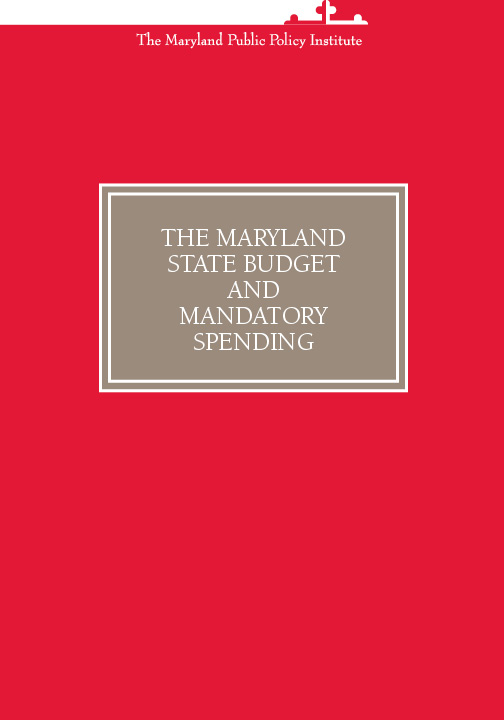
The Maryland State Budget and Mandatory Spending
State of the State
The State of Maryland is suffering from long-run and short-run fiscal problems. A recent comprehensive financial analysis of all 50 U.S. states ranked the Old Line State 41st in fiscal health.[1]
This study assesses the Maryland budget with a focus on mandatory spending and how the office of Governor Larry Hogan struggles to balance the budget due, in part, to rigid revenue earmarks and mandatory spending requirements. Entering this year’s budget cycle, 82.2 percent of expenditures were predetermined due to existing state laws and regulations.
The state budget is an extremely important to the state’s economic health. Maryland risks drastic economic changes if it does not address its long-run fiscal problems soon. Despite a balanced budget provision in the state constitution, the state government has accumulated $17.21 billion in debt—about $2,880 per capita, 30.4 percent higher than the U.S. state average.
Worse, Maryland’s unfunded pension liabilities are alarming. The state’s ability to pay 143,000 retired teachers, state police, judges, and other former employees is in jeopardy.[2] Maryland has a $45.5 billion investment portfolio to provide monthly benefits to about retired state employees. Unfortunately, the $45.5 billion is short of the anticipated payout necessary to fulfill the state’s retirement promises.
If the state’s investment portfolio earns its target return of 7.55 percent, Maryland would be short about $20 billion—39.0 percent—for its current long-term liabilities. For the fiscal year ending June 2016, Maryland’s retirement portfolio earned a meager 1.16 percent after fees. [3] The portfolio returned 2.68 percent for fiscal 2015.
Using a less-optimistic ‘risk-free’ assumption indexed to the 3.2 percent yield on 15-year Treasury bonds, Maryland’s unfunded pension liabilities total $74.7 billion, meaning the account is nearly 63.0 percent underfunded. Other post-employment benefits (OPEB) promised by the state, consisting primarily of health care and prescription drug coverage, are estimated to cost nearly $9.0 billion. Maryland’s OPEBs are 97 percent underfunded.
[1] Eileen Norcross and Olivia Gonzales, “Ranking the states by fiscal condition,” 2016 edition, Mercatus Center at George Mason University, June 2016, https://www.mercatus.org/sites/default/files/Norcross-Fiscal-Rankings-2-v3_1.pdf
[2] Josh Hicks, “Maryland pension system misses earnings target,” The Washington Post, August 16, 2016, https://www.washingtonpost.com/local/md-politics/maryland-pension-system-misses-earnings-target/2016/08/16/d63625c6-634d-11e6-8b27-bb8ba39497a2_story.html
[3] Michael D. Golden, “Maryland state retirement agency reports returns in FY 2016,” Maryland State Retirement and Pension System, August 12, 2016, http://www.sra.maryland.gov/News/2016/FY16_returns_press_release_final.pdf





